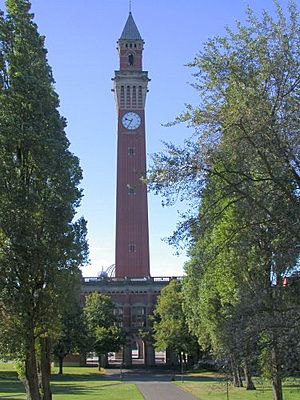Peter Bullock (scientist) facts for kids
Peter Bullock (born July 6, 1937, died April 5, 2008) was a very important soil scientist. He studied how soil is formed and how it can get damaged. Peter believed that we must take care of our soil so it can last a long time, just like a valuable resource. Because of his ideas, he joined the Intergovernmental Panel on Climate Change (IPCC). This group works on understanding climate change. Peter helped write reports for the IPCC, and this group even won the Nobel Peace Prize in 2007!
Peter Bullock's Life and Work
Peter Bullock was born in a place called Kinlet in Shropshire, England. He went to Bridgnorth Grammar School. In 1958, Peter finished his studies at the University of Birmingham with a degree in Geography.
After university, he started working for the Soil Survey of England and Wales (SSEW). He was a surveyor, which means he helped map and understand different types of soil. Later, he earned a master's in agricultural chemistry from the University of Leeds.
Peter then received a special scholarship called a Fulbright scholarship. This allowed him to study for his doctorate at Cornell University in the United States. He also worked for the United States Department of Agriculture for a while. In 1967, he came back to England.
Becoming a Soil Expert
Back in England, Peter became the head of the mineralogy section at the SSEW. Here, he became a world expert in soil micromorphology. This is a fancy way of saying he understood the tiny parts and structure of soil really well.
By the 1980s, Peter was leading research at the SSEW. He played a key role in moving the survey to Cranfield Institute of Technology. He also helped make sure the survey could keep going, even when the government thought about stopping its funding.
Working for the Environment
Peter became the director of the Soil Survey and Land Research Centre. He started getting involved in many important groups, both in his country and around the world. He was a special advisor to the Royal Commission on Environmental Pollution. This group looked into how we can use soil in a way that protects it for the future.
Because of this work, Peter was asked to join the Intergovernmental Panel on Climate Change (IPCC). The IPCC is a big international group that studies climate change. Peter helped write important reports for the IPCC. In 2007, the IPCC was even awarded the Nobel Peace Prize!
Peter showed how important soil is to the Earth's ecosystem. He also explained how climate change can cause land degradation, which means soil gets damaged and can't support life as well. He was a main author for a chapter in an IPCC report about land degradation and desertification.
Even after retiring, Peter continued to work. As a professor at Cranfield University, he helped set up the World Soil Survey Archive and Collection (WOSSAC). This is a place where soil information and samples are kept. He also helped create Soil-Net, which is an educational website to teach people about soil.
Peter Bullock was married to Patricia and they had two children.



